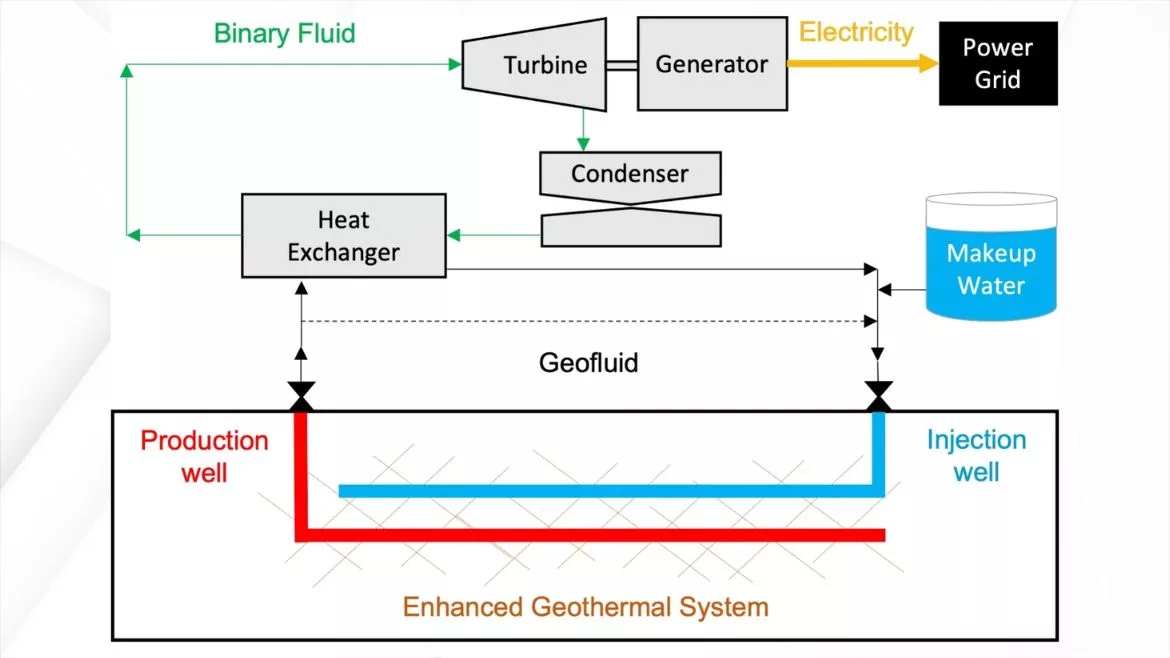Advancing Geothermal Drilling: Insights from EGS Study

A House bill with rare bipartisan support aims to advance enhanced geothermal systems (EGS) technology, potentially revolutionizing geothermal energy production in the U.S.
Recently, a study titled "Power Supply Characterization of Baseload and Flexible Enhanced Geothermal Systems" by Mohammad J. Aljubran and Roland N. Horne, published in Scientific Reports, was released.
This study offers groundbreaking insights that could significantly impact the future of geothermal drilling and, furthermore, the growth of the geothermal drilling sector. Understanding the significant impact of this study beyond its abstract could showcase exactly why geothermal drilling projects nationwide are bound to be successful and continue to expand. It also further showcases the importance of programs for geothermal apprenticeship and training as well as groups like the Geothermal Drillers Association and NY-GEO.
The research focuses on the techno-economic feasibility and power supply potential of Enhanced Geothermal Systems (EGS) across the contiguous United States, presenting data that could revolutionize the industry for geothermal drillers and company owners. To put it simply, the research shows exactly how viable geothermal is and where EGS is most likely to succeed currently.
Key Findings and Their Significance
Below are just a few of the takeaways from this study that geothermal drillers, drilling company owners, and geothermal advocates should know.
-
Enhanced Geothermal Systems (EGS) Potential: The study estimates that under business-as-usual scenarios, EGS could provide a supply capacity of 82,945 GW, with a lower levelized cost of electricity (LCOE) compared to conventional hydrothermal and solar photovoltaic projects. This potential dramatically increases to 184,112 GW when flexible geothermal dispatch is considered. This flexibility is achieved through wellhead throttling and power plant bypass, highlighting the importance of operational flexibility in EGS projects.
Projects like the geothermal project by Blacks in Green (BIG) in Chicago can benefit from the insights provided by this study on EGS. The study highlights the potential of EGS to provide a substantial supply capacity with a lower levelized cost of electricity compared to conventional hydrothermal and solar photovoltaic projects.
For geothermal drillers and company owners, these advancements indicate a promising future for geothermal energy, particularly in urban settings where space and efficiency are critical. Chicago’s efforts and those of New York as well exemplify how community-driven efforts can leverage geothermal technology to achieve sustainable and inclusive growth, potentially serving as a model for other cities worldwide. It all begins with drillers advocating for geothermal at a local level.
Geographical Hotspots: The research also identifies the Western and Southwestern regions of the United States as having the greatest EGS capacity potential, particularly in states like California, Oregon, Nevada, Montana, and Texas. For geothermal drilling companies, this indicates lucrative opportunities for exploration and development in these areas. While many of the current geothermal projects are on the east coast, it may be time for these major states and their large drilling companies to make the transition to geothermal drilling and EGS.
Cost Reduction through Advanced Drilling: Advanced drilling techniques have been shown to reduce the LCOE by an average of 25.1%. For drilling companies, adopting state-of-the-art drilling methods could enhance economic viability, making EGS projects more competitive and scalable. The concept was even discussed in our news feature, “Bill to Expand Geothermal Systems Has Bipartisan Support.”
Environmental and Economic Benefits: EGS provides a dispatchable renewable energy source with the potential to significantly reduce carbon emissions. The study underscores the importance of EGS in supporting a clean energy future, aligning with global decarbonization goals. For company owners, this represents a dual opportunity to contribute to environmental sustainability while tapping into a growing market demand for renewable energy solutions. This can also significantly impact the climate change and water scarcity issues in our nation over time by stabilizing our atmosphere and reducing carbon emissions.
Geothermal: A ‘Hot’ Topic
The findings from Aljubran and Horne's study present a compelling case for the advancement of EGS as a major player in the renewable energy sector. For geothermal drillers and drilling company owners, these insights offer a roadmap to capitalize on the vast potential of EGS. As our Industry Editor, Brock Yordy, once remarked, “In the past four decades, the demand for drilling to install ground source heat loops has risen and declined multiple times. This uncertainty has left water well drillers and industrial drilling companies skeptical about how long the next boom will last.
However, today's demand is the highest it's ever been, with incentives that will last through 2032. Two Hundred Countries and the United States have committed to being carbon neutral by 2050. Geothermal is the most reliable and secure way to save our planet by reducing greenhouse gas emissions. Despite this, the major perceived bottleneck to installing more ground source geothermal is the lack of committed drillers & drilling companies. The Geothermal Drillers Association aims to align drilling companies, drillers, and a new emerging workforce to existing and new opportunities to eliminate the idea that our field is the bottleneck to these net zero goals.”
By targeting high-potential regions, adopting advanced drilling technologies, and incorporating flexible operations, the geothermal industry can significantly contribute to a sustainable energy future while achieving economic growth and stability for drillers, communities, and future generations.
Looking for a reprint of this article?
From high-res PDFs to custom plaques, order your copy today!





